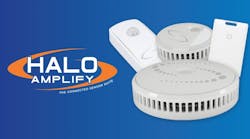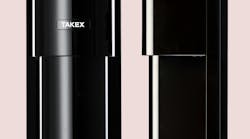Q: I heard that in the U.S. there are different standards for burglar alarm control panels among the different states and perhaps concerning power supplies. I know that the relevant Underwriters Laboratories (UL) requirements for equipment are national guidelines, so I don’t quite understand how this could be true.
A: There are many different entities, code bodies, standards organizations and others that have requirements for burglar alarms, access control and of course fire and life safety systems and that includes related power supplies, devices and other equipment.
UL, Northbrook, Ill., is a product safety testing and certification organization and there are numerous standards concerning the types of products and equipment security dealers and integrators install. For example, Standard 1778 covers uninterruptible power supply systems and UL 1641 is the Standard for Installation and Classification of Residential Burglar Alarm Systems. Another Standard is 1635 and it covers Digital Alarm Communicator System Units, while 1610 is the Standard for Central-Station Burglar-Alarm Units. Check out www.ul.com for more information.
I regard equipment connected to line voltages as appliances and look for the UL label, and if I have a concern, identify the specific listing number to be certain the device is appropriate for the application. Of course, don’t forget that manufacturers of equipment provide system design guidelines for the proper specification of auxiliary equipment used on their systems and can be a good place to start.
As far as false alarm ordinances, alarm systems and security companies, laws and requirements do vary quite a bit from state to state. Some great resources are the National Burglar and Fire Alarm Association, Irving, Texas—www.alarm.org and the Custom Electronic Design and Installation Association, Indianapolis, www.cedia.net. Both have information on applicable licensing and other laws covering alarm systems. Another fine point of reference is the Central Station Alarm Association, based in Vienna, Va., www.csaaul.org. Check with the city in which you do business or where the installation is located to find out about any alarm ordinances or other items of importance.
For fire alarm and life safety systems, your guide should be the Authority Having Jurisdiction (AHJ), as they are the ones who adopt particular codes, or have their own requirements. Always start with the AHJ before planning a fire alarm project.
There’s also the “Bible” or Life Safety Code 101 by the National Fire Protection Association (NFPA), Quincy, Mass., as well as NFPA 72, the National Fire Alarm Code. Other documents include: NFPA 75 Standard for the Protection of Information Technology Equipment; NFPA 730 Guide for Premises Security; and 731 Standard for the Installation of Electronic Premises Security Systems.
BUILDING CODES
Your state may also follow different building codes. The most commonly adhered to building codes come from the International Code Council or ICC (www.iccsafe.org). The ICC was established in 1994 as a nonprofit organization dedicated to developing a single set of national model construction codes. Its founders include the Building Officials and Code Administrators International Inc. (BOCA), International Conference of Building Officials (ICBO) and Southern Building Code Congress International Inc. (SBCCI). These organizations joined in consensus to provide single cohesive documents for the construction industry. Some of the codes developed by ICC include the International Building Code, International Fire Code and the International Residential Code..
The bottom line is that operating efficiently in the security installation and integration market takes a keen eye to codes and standards and regulatory bodies and their requirements, so always do your homework before you begin any project.

